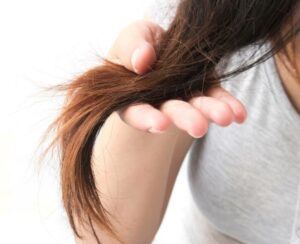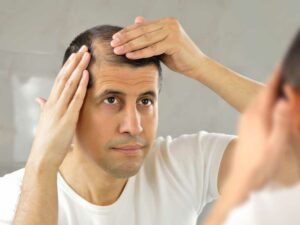Not many people know that one of the biggest discoveries in hair loss treatment was the product of an unexpected side effect. Minoxidil, the active ingredient in many modern hair loss remedies, began as a drug used to treat high blood pressure. During clinical trials, researchers noticed that the drug caused an unexpected side effect–people treated with it began growing hair on their hands. Puzzled by the results, scientists began to test minoxidil’s topical applications, leading to the discovery that it could make a significant difference in male pattern baldness.
The story behind what may become another major hair loss treatment also has its roots in chance. When testing an eye drop used for glaucoma called bimatoprost, researchers noticed that study participants were experiencing a marked increase in eyelash growth. Buzz surrounding these initial findings led to hope that bimatoprost could be the new cure for male pattern baldness; however, the high price of the brand name bimatoprost drug, Lumigan, would make treatment with the medication currently available impractical.
A recently published study at the University of Bradford in the UK has confirmed a link between bimatoprost and new hair growth in patients. In the study, scientists applied bimatoprost to living tissue samples obtained from the scalps of individuals undergoing plastic surgery. The effects of the drug were then observed and recorded. The researchers found that bimatoprost counteracted the effects of the androgen dihydrotestosterone (DHT) on the hair follicles.
DHT is a male sex hormone that is believed to be the driving force in androgenic alopecia. People who suffer from the condition have different receptors on their hair follicles than those without the condition. Caused by a genetic trait, this difference makes the follicles react to DHT in the skin and, over time, leads to shrinkage of the follicles. As the size of the follicles decreases, hair growth becomes thinner and eventually stops altogether.
The University of Bradford study found that bimatoprost activates a different receptor in the hair follicles, which helps the follicles retain their shape, even under the effects of DHT. Currently a clinical trial is underway in the United States and Germany to examine the effects of bimatoprost on 220 men and 170 women with androgenic alopecia. The findings of the university’s study suggest that the trial will ultimately have a positive outcome, bringing a practical bimatoprost-based hair loss treatment one step closer to mass distribution.





